Flooring is more than just a necessity for a home; it’s a canvas that reflects your taste and brings character to every room. The debate over the advantages and disadvantages of natural stone and ceramic tiles is as old as the materials themselves. Both options come with a unique set of benefits and drawbacks that can influence your decision based on durability, aesthetics, maintenance, cost, and more.
Introduction to Flooring Materials
In the world of flooring options, homeowners and interior designers are often met with the classic choice: natural stone or ceramic tiles? Each offers a distinct look and feel, with implications for various aspects of living space, from warmth and comfort to style and maintenance.
Why Choose Natural Stone Tiles?
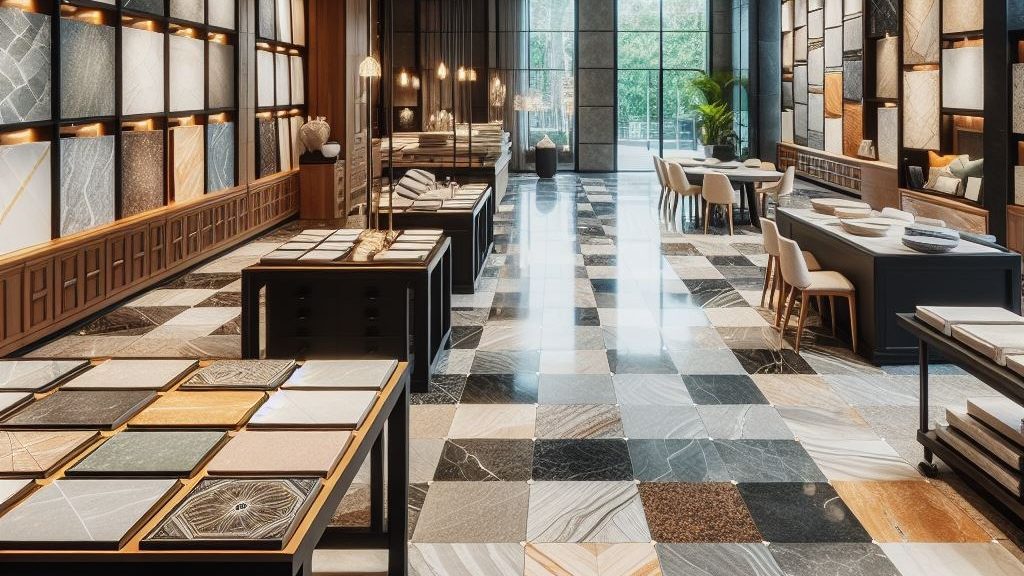
When we look at natural stone tiles, such as travertine, sandstone, or basalt, we see history as old as the earth itself, boasting unique textures and colours that only nature can provide. The variety of options available is immense. Natural stone tiles are a popular choice for homeowners and interior designers alike. They are versatile and can be used in a variety of applications, from flooring to backsplashes to countertops. Natural stone tiles are also durable and long-lasting, making them a great investment for any home. However, it’s important to note that natural stone tiles require more maintenance than ceramic tiles and can be more expensive. Despite this, the unique beauty and character of natural stone tiles make them a popular choice for those looking to add a touch of elegance and sophistication to their home.
| Natural Stone Types | Main Characteristics |
|---|---|
| Travertine | Earthy tones, durable |
| Sandstone | Warm colors, granular texture |
| Basalt | Dark tone, fine-grained |
| Check Out More Varieties | Our Stone Catalogue |
Exploring the Types of Natural Stone Tiles
It’s worth exploring the characteristics of different types of natural stone tiles, from the welcoming warmth of the Volcanic Basalt to the sleek sophistication of Aravalli Sandstone. Here are some more types of natural stone tiles:

Sandstone is a popular choice for flooring due to its natural beauty and durability. Sandstone tiles come in a variety of colours and textures, from the warm tones of Teakwood sandstone to the sleek sophistication of mirror-polished sandstone. If you’re considering sandstone for your flooring, it’s important to weigh the pros and cons and choose the right type of sandstone for your needs.
Pros:
- Natural beauty: Sandstone tiles come in various colours and textures, from the warm tones of Teakwood sandstone to the sleek sophistication of mirror-polished sandstone.
- Durability: Sandstone is a durable material that can withstand high-traffic areas such as kitchens and hallways.
- Easy to maintain: Sandstone is easy to clean and maintain, making it ideal for indoor applications such as flooring and walls.
- Timeless appeal: Sandstone is a timeless material that doesn’t go out of fashion or become outdated.
- Adds property value: Sandstone can raise property value because of its resale value and appeal to potential home buyers
Cons:
- Porous: Sandstone is a porous material and can absorb water, making it less ideal for bathroom flooring.
- Prone to scratches and dents: Sandstone is prone to scratches and dents from chairs, high heels, and strong impacts.
- Expensive: Sandstone tiles can be more expensive than other types of tiles such as ceramic or porcelain.
- Challenging to install: Sandstone tiles are heavier than other types of tiles and require more preparation work before installation.
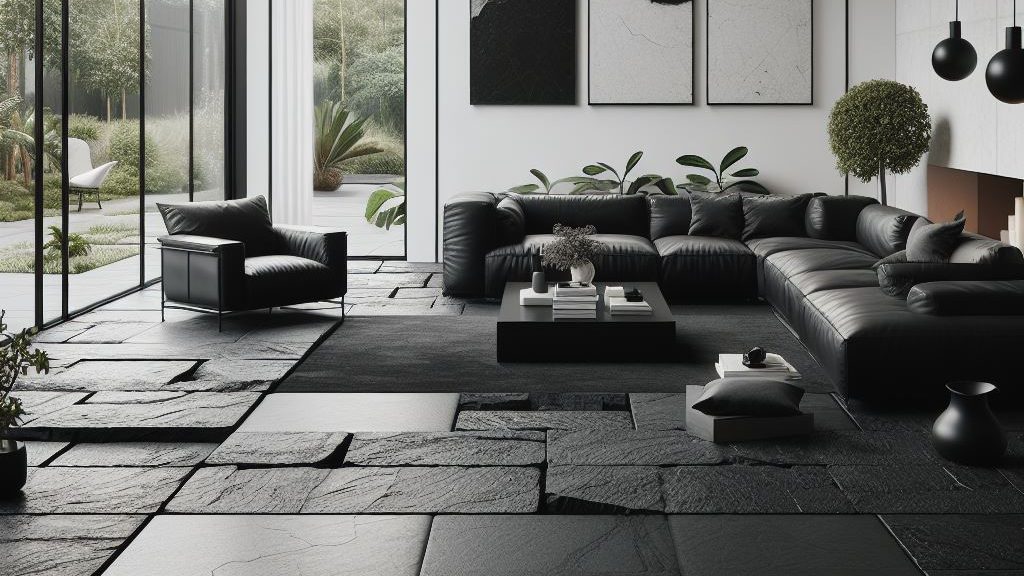
Basalt tiles are a popular choice for homeowners and designers alike due to their durability, versatility, and natural beauty. Basalt is a volcanic rock that is formed from the solidification of lava. It is a dense and hard-wearing material that is resistant to scratches, stains, and heat. Basalt tiles come in a range of colours, from dark grey to black, and can be honed, shotblasted, brushed, flamed or riverwashed to achieve a smooth or textured finish.
One famous example of basalt used in flooring is the Great Pyramid of Giza. The floor of the funerary temple of Khufu is made of basalt, which is incredibly durable and has withstood the test of time.
Pros:
- Durable: Basalt tiles are incredibly durable and can withstand heavy foot traffic, making them ideal for high-traffic areas such as hallways, entryways, and kitchens.
- Versatile: Basalt tiles can be used in a variety of applications, from flooring and walls to countertops and outdoor patios.
- Natural Beauty: Basalt tiles have a unique and natural beauty that can add a touch of elegance and sophistication to any design.
- Low Maintenance: Basalt tiles are easy to clean and require minimal maintenance, making them a practical choice for busy homeowners.
Cons:
- Expensive: Basalt tiles can be more expensive than other types of tiles such as ceramic or porcelain.
- Heavy: Basalt tiles are heavier than other types of tiles and require more preparation work before installation.
- Challenging to install: Basalt tiles can be challenging to install due to their weight and density.
- Limited colour options: Basalt tiles are generally available in darker shades of grey and black.
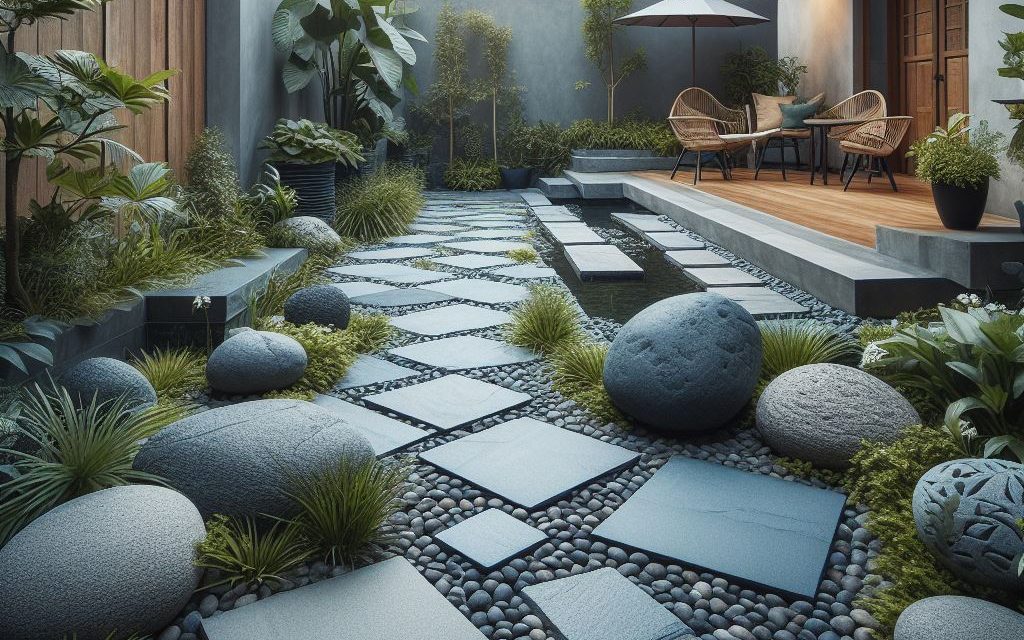
Limestone is a popular choice for homeowners and designers alike due to its natural beauty, versatility, and durability. Limestone is a sedimentary rock that is formed from the accumulation of organic and inorganic materials over time. It is a dense and hard-wearing material that is resistant to scratches, stains, and heat. Limestone tiles come in a range of colours, from beige to grey, and can be honed or polished to achieve a smooth or textured finish.
One famous example of limestone used in architecture is the Great Pyramid of Giza. The pyramid is made of limestone blocks that were quarried from nearby sources and transported to the site. The limestone blocks were then cut and shaped to fit together perfectly, creating a smooth and seamless surface.
Pros:
- Natural beauty: Limestone tiles have a unique and natural beauty that can add a touch of elegance and sophistication to any design.
- Durability: Limestone tiles are incredibly durable and can withstand heavy foot traffic, making them ideal for high-traffic areas such as hallways, entryways, and kitchens.
- Versatility: Limestone tiles can be used in a variety of applications, from flooring and walls to countertops and outdoor patios.
- Low Maintenance: Limestone tiles are easy to clean and require minimal maintenance, making them a practical choice for busy homeowner
Cons:
- Heavy: Limestone tiles are heavier than other types of tiles and require more preparation work before installation.
- Challenging to install: Limestone tiles can be challenging to install due to their weight and density.
- Limited colour options: Limestone tiles are generally available in lighter shades of beige and grey.

Marble is a luxurious and timeless natural stone that is often used in flooring. It is a softer stone than granite and is available in a wide range of colours and patterns, including white, black, green, pink, and grey.
Here are some of the pros and cons of using marble in flooring:
Pros:
- Durability: Marble is durable and resistant to weathering and foot traffic. It can last for two or more decades when installed correctly
- Cleanliness: Marble is easy to clean and hypoallergenic.
- Natural Beauty: No two pieces of marble are alike, making it a unique and one-of-a-kind flooring option.
- Tough: Marble adapts to various temperatures and is weather-resistant.
Cons:
- Porous: Marble is a porous stone and can scratch, stain, and discolour easily.
- High Maintenance: Marble requires consistent maintenance and specific care.
- Expensive: Marble is expensive and its high price can be quite shocking and unpredictable.
Marble has been used in flooring at many famous places in India. One such example is the Taj Mahal in Agra, which is made entirely of white marble. The marble was quarried in Rajasthan and transported to Agra for construction.

Granite is one of the most common types of natural stone used in flooring. It is a strong and durable stone that comes in many different colours and patterns, and also a variety of textures depending on where it was formed and what minerals or elements were present when it was being formed.
Have a look at it’s pros and cons:
Pros:
- Durability: Granite has a completely justified reputation for being highly durable. It is an extraordinarily hard flooring material which makes it exceedingly resilient to scuffs and scratches. Being resistant to scratching implies that it retains its luster for a much longer period making it considerably easier to maintain. When considering the overall life of the stone, granite is known to last as long as 100 years.
- Aesthetics: Granite is a beautiful stone that comes in many different colours and patterns. It can be used to create a wide range of looks, from modern and sleek to rustic and traditional.
- Low maintenance: Like most types of natural stone, granite is also low-maintenance and requires little if any maintenance. However, it does require sealants or polishes to keep the colour from fading.
Cons:
- Cost: Granite is an expensive flooring option. Its high price can be quite shocking and unpredictable.
- Installation: Fitting granite tiles on your floor is not as easy. You will need experts to do it. Granite is also heavy, which means that it may not be suitable for upper floors.
- Porosity: Granite is a porous stone and can stain easily if not sealed properly.
Granite has been used in flooring at many famous places in India. One such example is the Mysore Palace in Karnataka, which is made entirely of granite. The palace was built in 1912 and is one of the most popular tourist attractions in India.
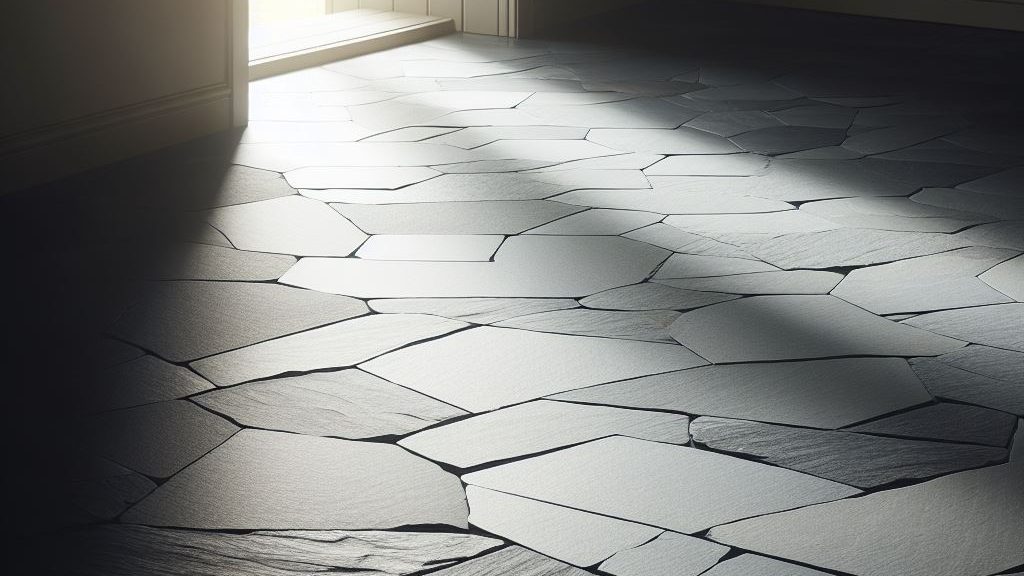
Slate is a handsome porous stone that is easy to cut and make into sheets.
It provides a rocky, ancient yet modern look to the room.
It is available in a range of colours, including grey, green, black, and red.
Here are some of the pros and cons of using slate in flooring:
Pros:
- Unique, attractive material: Slate has a unique and attractive appearance that can add character to any room. It is available in a range of colours and patterns, making it a versatile flooring option.
- Very durable: Slate is a very durable material that can withstand heavy foot traffic and is resistant to scratches and chips.
- Adds real estate value: Like most types of natural stone flooring, slate will add real estate value to your home.
Cons:
- Expensive: Slate is an expensive flooring option. Its high price can be quite shocking and unpredictable.
- Difficult DIY installation: Fitting slate tiles on your floor is not as easy. You will need experts to do it. Slate is also heavy, which means that it may not be suitable for upper floors.
- Requires sealing to prevent stains: Slate is a porous stone and can stain easily if not sealed properly.
Slate has been used in flooring at many famous places in India. One such example is the Jantar Mantar in Jaipur, which is made entirely of slate. The Jantar Mantar is a collection of architectural astronomical instruments built by the Rajput king Sawai Jai Singh II in the early 18th century.
Why Ceramic Tiles?

Ceramic tiles are a common flooring option for many homes and buildings. They are created from natural clay that goes through a process of shaping, glazing, and firing at high temperatures. Ceramic tiles have different colours, shapes, and sizes, and you can use them to make various patterns and designs on the floor.
Ceramic tiles have many benefits as a flooring material. They are strong, durable, and resistant to water, stains, and scratches. They are also easy to clean and maintain, as you don’t need to polish or wax them. Ceramic tiles are good for different rooms and areas, such as kitchens, bathrooms, living rooms, and hallways. You can also use them outdoors, as they can handle weather changes and UV rays.
Ceramic tiles are made through a process that has several steps. First, the clay is mined and refined to remove impurities. Then, the clay is mixed with water and other additives to make a paste. The paste is then moulded into the shape and size you want, either by hand or by machine. Next, the tiles are dried to remove excess moisture. After that, the tiles are glazed with a thin layer of liquid glass that gives them colour and shine. Finally, the tiles are fired in a kiln at temperatures between 1000 and 1250 degrees Celsius. The firing process makes the tiles hard and durable and also attaches the glaze to the clay.
Ceramic tiles have a long history and a wide range of uses. People have used them for flooring since ancient times, especially in the Mediterranean and Middle Eastern regions. They have also used them for artistic and decorative purposes, such as in mosaics, murals, and sculptures. Ceramic tiles are still popular today, as they offer a flexible and attractive flooring option for any space.
There are many kinds of ceramic tile flooring, each with its own features and uses. Here are some of the most common ones:
- Earthenware tiles: These are the oldest and most traditional ceramic tiles, made from clay that is fired at low temperatures. They have a rough and porous texture, and they usually have a glaze to make them water-resistant and colourful. Earthenware tiles are good for rustic and artistic settings, such as terracotta and faience tiles.
- Pros:
- Rustic and artistic appeal
- Glazed to make them water-resistant and colourful
- Cons:
- Porous and rough
- Prone to cracking and chipping
- Not very durable or resistant to stains and scratches
- Not suitable for high-traffic or outdoor areas
- Pros:
- Porcelain tiles: These are the most durable and versatile ceramic tiles, made from clay that is fired at high temperatures. They have a smooth and dense texture, and they are resistant to scratches, stains, and water. Porcelain tiles can look like natural materials, such as wood, stone, and marble.
- Pros:
- Durable and versatile
- Smooth and dense texture
- Resistant to scratches, stains, and water
- Can mimic natural materials
- Cons:
- Can be cold and hard underfoot
- Can be slippery when wet
- Can be expensive and heavy
- Can be difficult to cut and install
- Pros:
- Vitrified tiles: These are the most advanced and expensive ceramic tiles, made from clay that is mixed with silica and other additives, and fired at very high temperatures. They have a glossy and glassy texture, and they are almost completely non-porous and impermeable. Vitrified tiles are great for high-traffic and outdoor areas, as they are very strong and easy to clean.
- Pros:
- Glossy and glassy texture
- Almost completely non-porous and impermeable
- Great for high-traffic and outdoor areas
- Very strong and easy to clean
- Cons:
- Very expensive and heavy
- Can be slippery and reflective
- Can be difficult to cut and install
- Can be prone to chipping and cracking
- Pros:
- Glazed tiles: These are ceramic tiles that have a thin layer of liquid glass on their surface, which gives them a shiny and decorative finish. Glazed tiles can have different colours, patterns, and effects, such as matte, glossy, metallic, or textured. Glazed tiles are attractive and easy to maintain, but they can also be slippery and prone to cracking.
- Pros:
- Shiny and decorative finish
- Different colours, patterns, and effects
- Attractive and easy to maintain
- Cons:
- Slippery and prone to cracking
- Can be scratched or stained easily
- Can fade or lose their shine over time
- Can be difficult to match and replace
- Pros:
- Stoneware tiles: These are ceramic tiles that have a similar composition and appearance to natural stone, such as granite, slate, or limestone. Stoneware tiles are made from clay that is fired at medium to high temperatures and have a hard and dense texture. Stoneware tiles are resistant to water and wear and can be used for both indoor and outdoor flooring.
- Pros:
- Similar to natural stone
- Hard and dense texture
- Resistant to water and wear
- Suitable for indoor and outdoor flooring
- Cons:
- Can be cold and hard underfoot
- Can be expensive and heavy
- Can be difficult to cut and install
- Can require sealing and polishing
- Pros:
Ceramic tile flooring is a popular and practical choice for many homeowners and businesses, as it offers a combination of strength, durability, beauty, and affordability. However, it also has some limitations and challenges, and may not suit everyone’s preferences and needs. Therefore, it is important to consider the advantages and disadvantages of ceramic tile flooring before making a decision.
After considering all the features and shortcomings, we have combined the pros and cons of every type of natural stone and ceramic tiles for flooring and concluded with this table:
| Criteria | Stone Tiles | Ceramic Tiles |
|---|---|---|
| Durability | Limited colour options compared to stone tiles | Not as durable as stone tiles |
| Patterns | Unique patterns and natural look and feel | Limited colour options compared to stone tiles |
| Applications | Ideal for both indoor and outdoor applications | Ideal for indoor applications |
| Cost | Expensive compared to ceramic tiles | Affordable and budget-friendly |
| Maintenance | Require more maintenance than ceramic tiles | Versatile and easy to maintain |
| Installation | Heavy and difficult to install | Easy to install |
| Strength | Strong and sturdy | Can crack or chip easily |
Environmental Impact and Sustainability
The environmental footprint of your flooring choice is an increasingly important consideration. For natural stone, the impact comes from the mining and quarrying processes, which require energy and can disrupt local ecosystems. However, it’s worth noting that stone is a natural and long-lasting material that can be recycled or repurposed.
On the other hand, ceramic tile production involves processing and firing clay, which consumes significant amounts of energy. However modern manufacturing techniques have made strides in reducing this impact through more sustainable practices.
| Aspect | Natural Stone | Ceramic |
|---|---|---|
| Resource Extraction | Can be disruptive, but stone is natural | Clay extraction is less impactful |
| Production Energy | Primarily in cutting and transport | High due to kiln firing |
| Recyclability | High (can be reclaimed) | Moderate (depends on the recycling facilities) |
Each has its considerations, and we advise looking at the long-term lifecycle of the flooring to assess its overall environmental impact.
Assessing the Climate and Usage Suitability
When choosing between stone and ceramic, you’ll want to consider how each material responds to temperature and wear. Some natural stones, like sandstone and travertine, can keep your floors cool, making them an ideal choice for hot climates. On the other hand, ceramic tiles might provide a warmer touch underfoot in cooler environments.
It’s also crucial to consider the use case. For example, basalt tiles with a honed finish offer excellent durability for high-traffic areas, while some ceramics are ideal for spaces that see lighter use.
Aesthetic Considerations for Interior Design
The look and feel of your flooring are paramount to your home’s overall aesthetic. Natural stone offers an irreplicable touch of nature’s artwork, while ceramic tiles provide a clean, uniform appearance.
When it comes to matching your home’s decor, if you’re aiming for an organic, rustic, or elegant design, natural stone options like lapatro finish sandstone could be your best bet. For a more contemporary, sleek interior design, the various finishes in ceramic might be more appropriate.
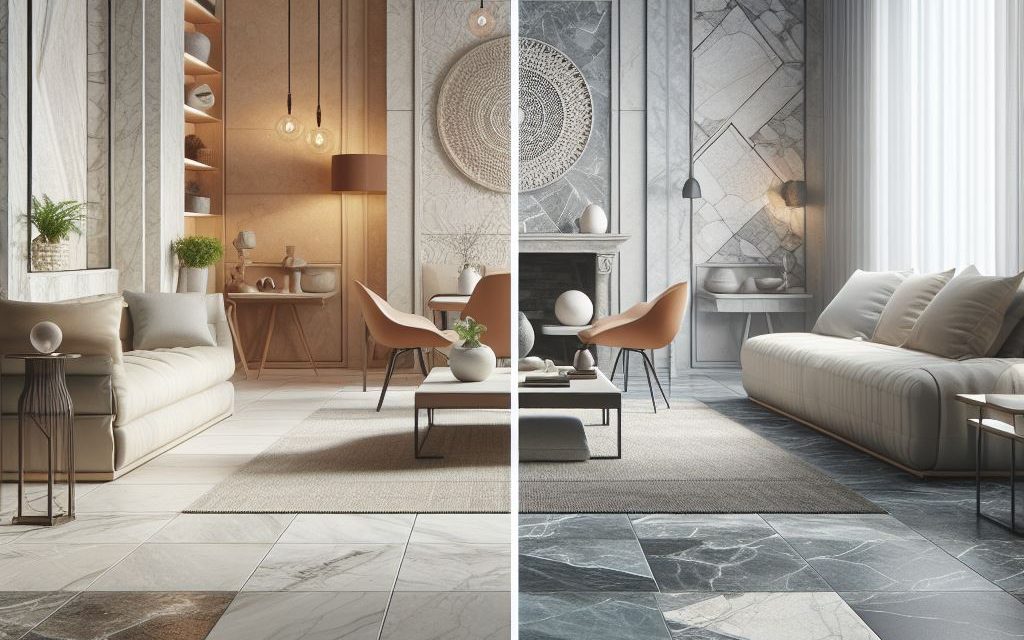
| Interior Style | Recommended Material | Link to Inspirations |
|---|---|---|
| Rustic & Organic | Natural Stone | Design Ideas |
| Modern & Sleek | Ceramic | Modern Ceramics |
Incorporating the right flooring can make or break the desired ambience. It’s worthwhile exploring interior design options to ensure the chosen material aligns with your vision.
Resale Value and Investment Considerations
The flooring material you select can significantly affect your home’s resale value. Natural stone has a reputation for luxury and can be a selling point for potential buyers. It’s often perceived as a higher-end product and may contribute to a higher valuation of your property.
By contrast, ceramic may not have the same cachet with buyers, although it can still be attractive due to its practical benefits and a wide variety of styles. This decision might come down to balancing immediate costs against long-term investment potential.
The Verdict: Which Is Better for Your Home?
Given the comprehensive evaluation of both materials, the verdict often lies in the specific needs and preferences of the homeowner. The key takeaways suggest that natural stone is ideal for those looking for uniqueness, longevity, and added property value, whereas ceramic could suit those interested in cost-effectiveness, ease of maintenance, and design uniformity.
How to Choose the Right Flooring for You
Selecting the right flooring comes down to personal preferences and practical considerations. How much traffic will the floor need to withstand? What is your budget? How much maintenance are you willing to commit to?
Remember, this decision isn’t just about today—it’s about envisioning the years of enjoyment and the ambience that your flooring will bring to your home. Our team at Arihanta Industries is always ready to help guide you through this choice.
FAQs: Answering Common Queries About Flooring
We understand you may still have questions, so we’ve compiled this section to provide you with quick answers and expert advice on some of the most common questions regarding flooring.
Q: Can natural stone tiles be used in any room of the home?
A: Absolutely! Natural stone tiles can be used in virtually any room. However, it’s important to consider the stone’s properties—for instance, some stones are more water-resistant and would be better suited for bathrooms and kitchens.
Q: Are ceramic tiles durable enough for high-traffic areas?
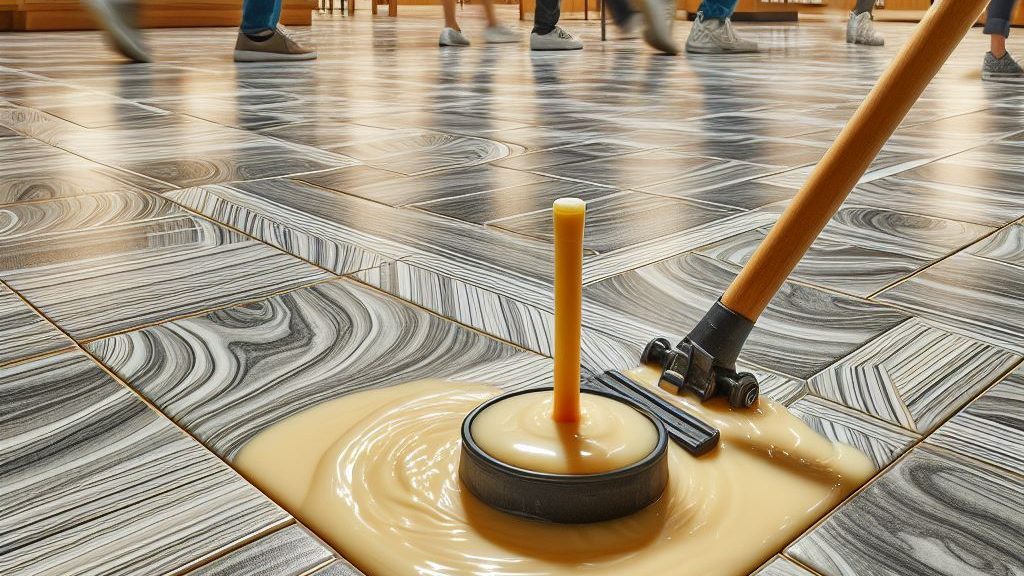
A: Ceramic tiles are quite durable and can handle high-traffic areas, especially if you choose a tile that is rated for such use. Look for tiles with a high PEI rating to ensure they can withstand wear and tear.
.
.
Q: How often should natural stone flooring be resealed?
A: Typically, natural stone should be resealed every 1 to 3 years, depending on the stone’s porosity, the sealant used, and the amount of foot traffic the area receives.
Q: What is a PEI rating for ceramic tiles?
A: The Porcelain Enamel Institute (PEI) rating indicates the tile’s hardness and durability. The scale ranges from PEI 1 (suitable for no foot traffic) to PEI 5 (heavy foot traffic).
Q: Is there a cost-effective natural stone flooring option?
A: Yes, some natural stones can be more affordable than others. For instance, certain types of kota stone or slate can be more budget-friendly compared to premium stones like marble or high-quality granite.
Q: Can ceramic tiles mimic the look of natural stone?
A: Indeed, modern ceramic tiles can very convincingly mimic the look of natural stone, providing a cost-effective alternative with less maintenance required.
Q: What is the best way to clean stone tiles?
A: Stone tiles should be swept or vacuumed to remove debris and then cleaned with a damp mop using a pH-neutral cleaning solution specially formulated for natural stone.
Remember, for further inquiries or personalized advice for your flooring project, feel free to reach out to our team. We’re always ready to assist you in finding the perfect flooring solution!
Conclusion: Embracing the Flooring That Suits Your Lifestyle
In conclusion, whether you gravitate towards the authentic allure of natural stone or the practical versatility of ceramic tiles, the decision ultimately rests upon your personal taste and the demands of your space. At Arihanta Industries, we pride ourselves on offering a range of flooring options to suit every style and need.
We encourage you to embrace the material that aligns with your style, meets the needs of your environment, and provides the comfort and enjoyment you seek in your living space. If you’re ready to explore the wealth of options available, our catalogue is the perfect place to start.
For further advice or to discuss your options with an expert, don’t hesitate to get in touch with us. We’re here to help you create a foundation that you—and your home—will love for years to come.






Add comment